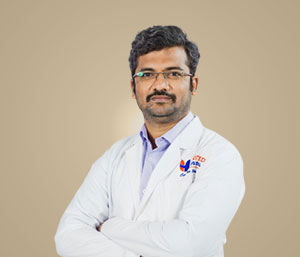A mastectomy is a surgery to remove all breast tissue from a breast as a way to treat or prevent breast cancer. Surgery to restore shape to your breast — called breast reconstruction — may be done at the same time as your mastectomy or during a second operation at a later date. For those with early-stage breast cancer, a mastectomy may be one treatment option. Breast-conserving surgery (lumpectomy), in which only the tumour is removed from the breast, may be another option.
What are the indications for mastectomy?
A mastectomy may be a treatment option for many types of breast cancer, including:
- Ductal carcinoma in situ (DCIS), or noninvasive breast cancer
- Stages I and II (early-stage) breast cancer
- Stage III (locally advanced) breast cancer — after chemotherapy
- Inflammatory breast cancer — after chemotherapy
- Paget's disease of the breast
- Locally recurrent breast cancer
What are the types of mastectomy procedures?
- Total (simple) mastectomy - This method removes the whole breast, including the nipple, the colored ring around the nipple (called the areola), and most of the overlying skin.
- Modified radical mastectomy - The entire breast is removed. This includes the nipple, the areola, the overlying skin, and the lining over the chest muscles. Some of the lymph nodes under the arm are also removed. Breast cancer often spreads to these lymph nodes. It can then spread to other parts of the body. In some cases, part of the chest wall muscle is also removed.
- Radical mastectomy- The entire breast is removed, including the nipple, the areola, the overlying skin, the lymph nodes under the arm, and the chest muscles under the breast. For many years, this was the standard surgery. But today it is rarely done. It may be advised when breast cancer has spread to the chest muscles.
- Skin-sparing mastectomy- The breast tissue, nipple, and areola are removed. But most of the skin over the breast is saved. This type of surgery seems to work as well as radical mastectomy. It is used only when breast reconstruction is done right after the mastectomy. It may not be a good method for tumors that are large or near the skin surface.
- Nipple-sparing mastectomy- This is similar to the skin-sparing mastectomy. It is sometimes called a total skin-sparing mastectomy. All of the breast tissue, including the ducts going all the way up to the nipple and areola, is removed. But the skin of the nipple and areola are preserved. The tissues under and around the nipple and areola are carefully cut away and checked by a doctor called a pathologist. If no breast cancer cells are found close to the nipple and areola, these areas can be saved. Otherwise, this method is not advised. Reconstruction is done right after the mastectomy.
Mastectomy to prevent breast cancer
- You might also consider a mastectomy if you don't have breast cancer, but have a very high risk of developing the disease.
- A preventive (prophylactic) or risk-reducing mastectomy involves removing both of your breasts and significantly reduces your risk of developing breast cancer in the future.
- A prophylactic mastectomy is reserved for those with a very high risk of breast cancer, which is determined by a strong family history of breast cancer or the presence of certain genetic mutations that increase the risk of breast cancer.

 (+91) 7022316664
(+91) 7022316664  Emergency: (+91) 80 4566 6616
Emergency: (+91) 80 4566 6616 












